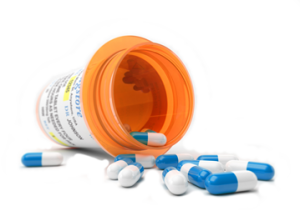New Report Warns of 21st Century Cures Act Shortfalls
In December 2015, non-profit group Public Citizen published a report highlighting a provision in the proposed 21st Century Cures Act that could cost taxpayers $12 billion — and that’s just one of the expenses. The report — written by Sammy Almashat and Sarah Sorscher of Public Citizen’s Health Research Group and Steven Knievel of Public Citizen’s Access to Medicines Division — highlighted the ways this supposedly groundbreaking bill could do more harm than good.
The House of Representatives passed the bill in July 2015. According to Public Citizen, many of the provisions in the 21st Century Cures Act would actually lower the approval standards of the Food and Drug Administration for new products. This means new FDA approved cures might not be safe or effective for patient use. Not only is this practice dangerous, it’s also very costly. The report points to a recent analysis in the British Medical Journal that revealed how the early approval of one unsuccessful new Alzheimer’s drug could cause $7 billion in wasteful spending over a four year period.
Bill encourages companies to repurpose drugs
The report also focuses on a part of the bill that encourages pharmaceutical companies to find a way to treat rare diseases using drugs that have already received FDA approval. Each manufacturer that receives approval to market their drug for an innovative orphan treatment would receive an extra six months of monopoly protection for all uses of the drug. Consequently, this would make it much more challenging for the public to gain access to affordable generic drugs.
Public Citizen believes this provision would cost Medicaid, Medicare and other health programs sponsored by the federal government $869 million over a period of ten years. The authors predict the total costs to the public could rise up to $11.6 billion during this time span.
Act encourages abuse of drug approval system
The measure would also allow for the approval of even more poorly developed and tested orphan drugs, which the authors believe would promote abuse of the system. They cite a 2010 Institute of Medicine review of the 101 orphan drugs that received approval from 2000 to 2009. Just around one-third were completely new drugs and an overwhelming two-thirds had previously received approval in the U.S. or another country or were markedly similar to one of these drugs.
The authors suggest the addition of the six month exclusivity period will only encourage manufacturers to make small changes to existing drugs, instead of investing in new treatments that may be more effective. Drugs that receive FDA approval for rare diseases are often not put under the microscope as much as those used to treat other issues. Consequently, this results in lower standards of approval and a greater chance that some orphan drugs may be inherently risky.
The harmful side effects of many popular drugs were only discovered after they received FDA approval and were placed on the market.
For example, Zofran received FDA approval for the treatment of nausea and vomiting in chemotherapy patients in January 1991, but many physicians prescribed the drug off-label to help reduce morning sickness in pregnant women. Litigation concerning Zofran and birth defects is currently mounting.
Additionally, Propecia was approved to treat male pattern baldness in 1997, but the FDA announced a link to adverse sexual side effects in 2012.
- Public Citizen, House Orphan Drug Proposal: A Windfall for Pharma, False ‘Cure’ for Patients http://www.citizen.org/documents/2289.pdf
- U.S. Food and Drug Administration, Zofran http://www.fda.gov/downloads/Drugs/DevelopmentApprovalProcess/DevelopmentResources/UCM163358.pdf
- U.S. National Library of Medicine, Is Ondansetron Safe for Use During Pregnancy? http://www.ncbi.nlm.nih.gov/pmc/articles/PMC3470505/
- CBS News, FDA Adds Sexual Side Effects Warning to Baldness Drug http://www.cbsnews.com/news/fda-adds-sexual-side-effects-warning-to-baldness-drug-propecia/


 Resources
Resources
 Resources
Resources
